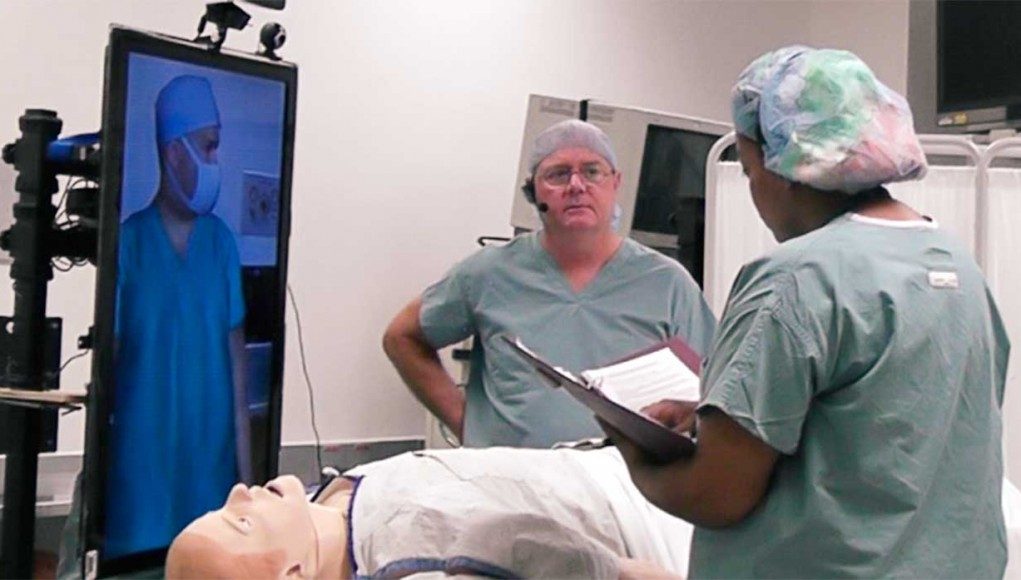 Team training scenarios are often difficult due to the logistics involved with coordinating many different people’s schedules. One solution has been to use virtual humans as stand-ins for actual humans in team training scenarios where the conversation is mediated by ‘Wizard of Oz’ interactors who are puppeting the virtual humans. The goal is to recreate a sense of social presence so that the person being trained forgets that they are interacting with virtual humans instead of actual humans.
Team training scenarios are often difficult due to the logistics involved with coordinating many different people’s schedules. One solution has been to use virtual humans as stand-ins for actual humans in team training scenarios where the conversation is mediated by ‘Wizard of Oz’ interactors who are puppeting the virtual humans. The goal is to recreate a sense of social presence so that the person being trained forgets that they are interacting with virtual humans instead of actual humans.
LISTEN TO THE VOICES OF VR PODCAST
There still needs to be a human in the loop to be able to interpret and respond to the primary person being trained, but the human interactor operating the virtual human can respond by selecting a number of pre-recorded scripted responses. Even though real humans are almost always preferred, using virtual humans can give more accuracy and repeatability to the training scenario, and provide similar strong results with more efficiency.

Andrew Robb is a post-doc at Clemson University, and he’s been researching how to use virtual humans in these types of team training scenarios. Specifically, he talks about training nurses to stand up to surgeons when they want to proceed with a surgery despite replacement blood not being ready yet, which would put the patient’s life in danger if there’s a complication in the preparation process. These are complicated social dynamics and if a nurse isn’t comfortable in speaking up, then it could result in the patient dying. So Andrew has been focused on how to recreate a sense of social presence using virtual humans in order to create a team social dynamic that allows nurses to get practice and training so that they have the confidence to speak up against someone on their team who wants to violate safety protocol.
Andrew mentions a paper by Frank Biocca and Chad Harms titled “Defining and measuring social presence: Contribution to the Networked Minds Theory and Measure, which sets out some definitions for social presence and a networked minds theory for understanding the mechanics of social presence in a virtual environment. They say that: “Most succinctly defined as a ‘sense of being with another in a mediated environment’, social presence is the moment-to-moment awareness of co-presence of a mediated body and the sense of accessibility of the other being’s psychological, emotional, and intentional states.”
Networked Minds Social Presence theory describes ingredients for co-presence with other ppl: https://t.co/gkvUNNotOM pic.twitter.com/v99b9XgEIt
— KentBye Voices of VR (@kentbye) August 11, 2016
I had a chance to catch up with Andrew at the IEEE VR conference where he talked about his experiments in using virtual humans within team training scenarios, some of the research of how humans self-disclose more information to virtual humans, how gaze behavior could provide an objective measure for social presence, and more details about other theories of social presence and co-presence that provide models for how we create models of people’s minds, feelings, and motivations.
Support Voices of VR
- Subscribe on iTunes
- Donate to the Voices of VR Podcast Patreon
Music: Fatality & Summer Trip







